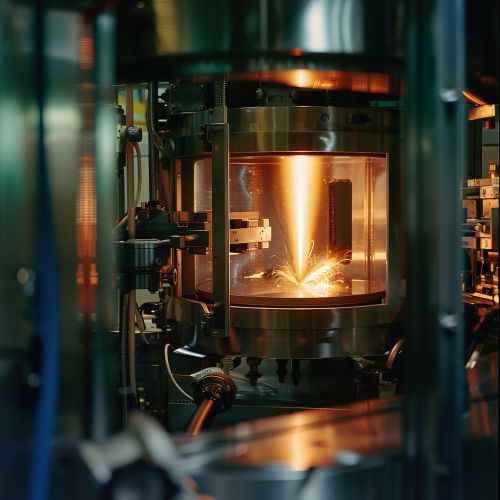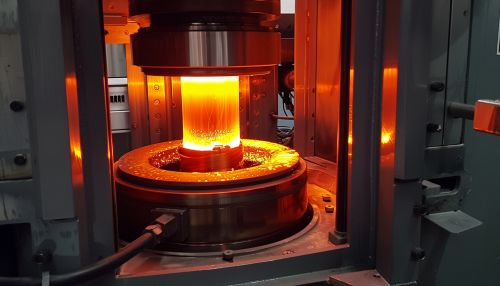Sputtering
Introduction
Sputtering is a process used in physics and chemistry that involves the ejection of particles from a solid target material due to bombardment by energetic particles. It is a form of physical vapor deposition, a group of processes used to deposit thin films and coatings.


History
The phenomenon of sputtering was first observed by Faraday in 1852. However, it was not until the 20th century that the process was studied in detail and its potential applications were realized.
Sputtering Process
The sputtering process begins with the generation of a plasma, a state of matter consisting of free electrons and ions. The plasma is typically created in a vacuum chamber by applying a voltage between two electrodes. The target material to be sputtered is attached to one of the electrodes. When the voltage is applied, electrons are stripped from the atoms in the gas, creating a plasma. This plasma is then used to bombard the target material, causing atoms to be ejected from its surface. These ejected atoms can then condense on a substrate to form a thin film.
Mechanism
The mechanism of sputtering involves several steps. First, the incident ions in the plasma collide with the atoms in the target material. This collision transfers energy from the ions to the atoms, causing them to become excited. If the energy transferred is sufficient, the atoms can overcome the binding energy that holds them in the target material and be ejected. This process is known as ionization. The ejected atoms then travel through the vacuum chamber and condense on the substrate, forming a thin film.
Types of Sputtering
There are several types of sputtering, each with its own unique characteristics and applications. These include:
- DC Sputtering: DC sputtering is the most common type of sputtering. It involves the use of a direct current power supply to generate the plasma. DC sputtering is typically used for sputtering metals.
- RF Sputtering: RF sputtering, or radio frequency sputtering, uses an alternating current power supply to generate the plasma. This allows for the sputtering of non-conductive materials, such as oxides and nitrides.
- Magnetron Sputtering: In magnetron sputtering, a magnetic field is used to confine the plasma close to the target material. This increases the ionization efficiency, resulting in higher sputtering rates.
- Reactive Sputtering: Reactive sputtering involves the introduction of a reactive gas into the vacuum chamber. This gas reacts with the sputtered atoms to form a compound that is then deposited on the substrate.
Applications
Sputtering has a wide range of applications in various fields. These include:
- Thin Film Deposition: Sputtering is commonly used to deposit thin films of materials onto a substrate. This is used in the manufacture of semiconductors, optical coatings, and magnetic storage media.
- Surface Analysis: Sputtering can be used to analyze the composition of a material's surface. This is done by sputtering the surface and analyzing the ejected atoms.
- Etching: Sputtering can also be used to etch materials. This is done by sputtering the material to be etched and not allowing the ejected atoms to condense.
